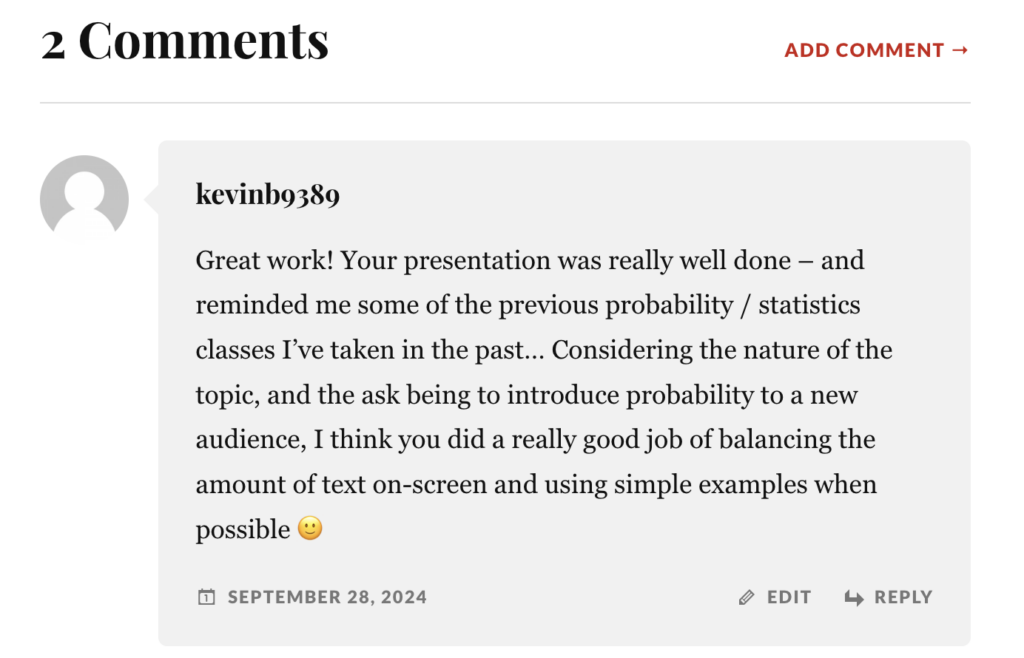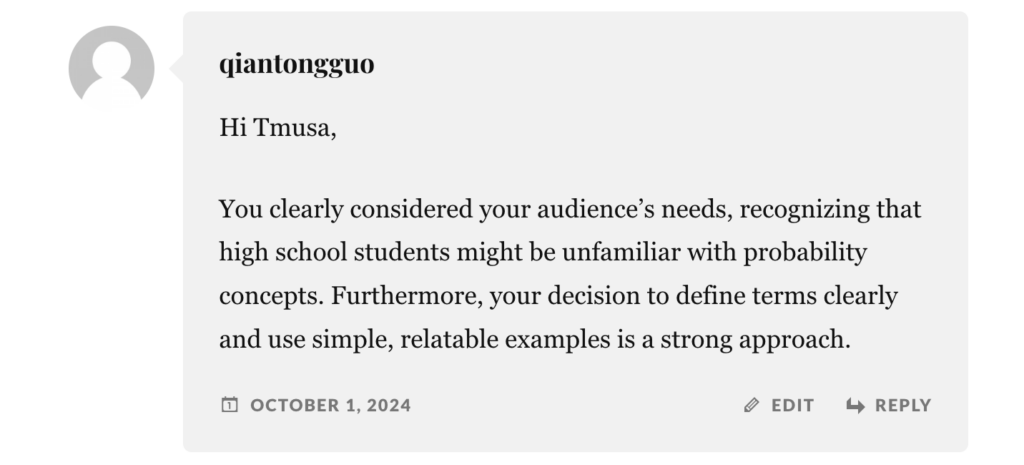My Screencast on Basic Probability
For this assignment, I created a screencast on a basic probability lesson using MC PowerPoint and Zoom. This helped me learn more about Mayer’s Cognitive Theory of Multimedia Learning (CTML) and how to use its key principles to make my video easier to understand and follow.
My Audience

I imagined my audience as high school students who are new to probability. This influenced my design choices a lot. I made sure to clearly define terms and used simple, relatable examples.
Challenges in Applying CTML Principles
One challenge I had was applying the modality principle, which suggests that learners understand information better when it’s explained through graphics and narrations , rather than using graphics and on-screen text. Since my audience might not be familiar with some of the terms, I had to balance between speaking the lesson and showing key terms on the screen.
How I Applied CTML Principles
I focused on reducing Extraneous Cognitive Load by using less text on each slide. Even though some slides still had more text than I wanted, I tried to split the content across multiple slides. This made it easier for viewers to follow one idea at a time.
I also used the segmenting principle by organizing the lesson step-by-step. I started with basic probability terms and then showed examples of calculating probability in simple cases.
Lastly, I applied the image principle, which suggests that showing the presenter’s image might distract from the content. So, I chose to use only my voice to help the audience stay focused on the material without distractions.
Comments
I had issue with my blog post so here’s a screenshot of the comments


Hi Tmusa,
I think this blog is excellent! The video on basic probability for high school students is well-suited to your target audience, and the three principles you mentioned were clearly demonstrated in the video. Personally, I couldn’t find many areas for improvement. The only thing I would suggest is that the final slide looks a bit crowded, and adjusting the layout might make it even better. Overall, this is a very fantastic tutorial video in my opinion.